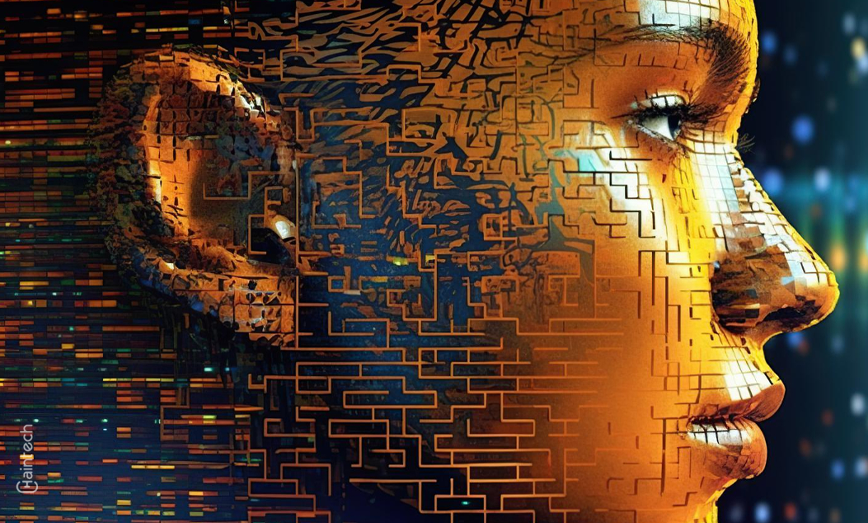Embracing True Digital Freedom: The End of Data Abuse and the Promise of Decentralized Identity

Introduction
The digital age has brought forth unprecedented challenges, with data abuse and exploitation reaching alarming levels. The rampant misuse of personal information through data breaches and cyberattacks has become an ever-increasing threat. Additionally, the rise of surveillance capitalism has commodified personal data, eroding privacy and autonomy. However, a glimmer of hope emerges in the form of decentralized identity, a concept that holds immense promise in curbing data abuse and restoring digital freedom.
Understanding Data Abuse
A. The rampant misuse and exploitation of personal data
- Data breaches and cyberattacks: An ever-increasing threat
The proliferation of technology has created new opportunities for cybercriminals to gain unauthorized access to personal data. Data breaches, where sensitive information is stolen or exposed, have become distressingly common. From financial institutions to healthcare providers, no industry is immune to these attacks. As malicious actors continuously refine their tactics, the need for robust protection mechanisms becomes paramount.
- Surveillance capitalism: The commodification of personal information
In recent years, the phenomenon of surveillance capitalism has gained significant attention. Big tech companies, driven by profit, have adopted business models that rely heavily on collecting and monetizing personal information. This unquenchable thirst for data has raised concerns about individual privacy and the ethics of utilizing personal information for targeted advertising and manipulative purposes.
B. The consequences and implications of data abuse
- Eroding privacy and autonomy
Data abuse has eroded the very essence of privacy, leaving individuals vulnerable to unauthorized surveillance and exploitation. With personal data freely circulating in the digital realm, the once-sacrosanct right to privacy is at risk of being permanently undermined. Furthermore, the loss of autonomy over personal information diminishes individual agency and self-determination, as third parties decide how data is used and shared.
- Manipulative targeting and discrimination
The exploitative use of personal data enables malicious actors to engage in manipulative targeting and discriminatory practices. By analyzing user data, companies can tailor advertisements and content with meticulous precision, shaping individual perceptions and preferences. However, this level of personalization can reinforce existing biases, perpetuate discrimination, and further fragment society.
The Rise of Decentralized Identity
A. Defining decentralized identity
- Breaking down the core principles
Decentralized identity, also known as self-sovereign identity, is a paradigm shift in how individuals assert and control their digital identities. Fundamentally, it aims to empower individuals with the ownership and control of their personal data. By decentralizing identity management, this new approach disrupts the traditional reliance on centralized systems and puts individuals in charge of their own digital selves.
- How it differs from traditional centralized identity systems
Traditional centralized identity systems rely on trusted entities, such as governments or corporations, to authenticate and manage user identities. In contrast, decentralized identity solutions leverage distributed ledger technologies such as blockchain. Rather than relying on a single point of control, these systems distribute identity-related data across a network of nodes, enhancing security and granting individuals greater control over their information.
B. Blockchain technology as a foundation for decentralized identity
- Immutable and tamper-proof records for enhanced security
Blockchain technology serves as an ideal foundation for decentralized identity due to its inherent characteristics. The immutability and tamper-proof nature of the blockchain ensure that once data is recorded, it cannot be easily altered or deleted. This feature diminishes the risk of data manipulation and enhances security, fostering trust in the system.
- Empowering individuals and shifting control over personal data
Decentralized identity solutions, built on blockchain, shift the control and ownership of personal data from centralized authorities to individuals. By keeping personal information in a user-centric repository, blockchain-based decentralized identity systems reduce the dependency on intermediaries and provide individuals with the ability to selectively disclose information, thus reclaiming their digital autonomy.
Advantages and Benefits of Decentralized Identity
A. Enhanced privacy protection
- User-centric data ownership and control
Decentralized identity solutions prioritize user-centric data ownership and control. Instead of entrusting sensitive information to third-party entities, individuals retain ownership of their personal data within a secure and private environment. This user-centric approach ensures that individuals have full agency over their information and can decide how, when, and with whom to share it.
- Minimal data exposure and selective disclosure
Decentralized identity allows individuals to be selective when it comes to data disclosure. Instead of granting unrestricted access to personal information, users have the ability to reveal only the necessary data for a given transaction or interaction. This minimizes the exposure of sensitive details, reducing the risk of data abuse and unauthorized access.
B. Eliminating single points of failure and increased security
- Mitigating the risks of centralized breaches
One of the fundamental advantages of decentralized identity is the elimination of single points of failure. Traditional centralized systems are vulnerable to data breaches, as a single breach can expose millions of individuals’ data. In contrast, decentralized identity systems distribute personal information across multiple nodes, making it significantly harder for malicious actors to compromise the system at scale.
- Encrypted transactions and authentication mechanisms
Decentralized identity solutions leverage robust cryptographic techniques to secure transactions and authentication processes. By encrypting the data exchanged between parties, these systems ensure that sensitive information remains confidential and protected from unauthorized access. Encryption provides an added layer of security, bolstering trust and reducing the risk of data abuse.
C. Facilitating seamless digital interactions
- Streamlining identity verification processes
Decentralized identity simplifies the often cumbersome and repetitive process of identity verification. With decentralized identity credentials, individuals can prove their identity quickly and securely across various platforms and services. This streamlined verification process not only saves time but also eliminates the need to repeatedly share personal information, enhancing user convenience while maintaining data privacy.
- Simplifying cross-platform authentication
Traditional centralized identity systems often struggle with cross-platform compatibility, requiring users to create separate accounts for different services. Decentralized identity, enabled by standardized protocols and interoperability, enables seamless authentication across platforms, eliminating the need for multiple accounts. This simplicity enhances user experience and reduces the reliance on centralized identity providers.
Realizing the Vision of Decentralized Identity
A. Collaborative efforts and industry partnerships
- Leveraging the expertise of tech giants and innovators
Achieving widespread adoption of decentralized identity requires collaboration among a diverse range of stakeholders, including tech giants, innovators, and regulatory bodies. By pooling their expertise and resources, these entities can develop robust frameworks, interoperable standards, and scalable solutions that drive the adoption and implementation of decentralized identity on a global scale.
- Interoperability and standardization initiatives
Interoperability and standardization are key considerations in the successful implementation of decentralized identity. Industry-wide initiatives that develop and promote interoperable protocols and standards ensure that different identity systems can seamlessly communicate with each other. This collaboration fosters a cohesive and user-friendly experience while enhancing the scalability and utility of decentralized identity solutions.
B. Overcoming adoption challenges and regulatory concerns
- Ensuring compliance with data protection regulations
The adoption of decentralized identity must align with existing data protection regulations to ensure legal compliance and user confidence. Collaboration between technology developers and regulatory bodies is crucial in establishing a framework that strikes a balance between privacy, security, and innovation. By adhering to data protection regulations, decentralized identity can gain broader acceptance and overcome potential barriers to adoption.
- Educating users and organizations on the benefits and usability
Educating users and organizations about the benefits and usability of decentralized identity is essential for widespread adoption. Open and accessible communication channels should be established to inform and engage users, dispelling misconceptions and addressing concerns. By demonstrating the advantages of decentralized identity, stakeholders can encourage its adoption and promote a more privacy-centric digital landscape.
Promising Use Cases and Implementations
A. Self-sovereign identity: Empowering individuals
- Decentralized personal data storage and management
Self-sovereign identity enables individuals to take control of their personal data by leveraging decentralized storage systems. Blockchain technology allows users to securely store and manage their personal information, reducing the dependence on centralized authorities. This empowerment ensures that individuals have comprehensive visibility and authority over their own digital identities.
- Portable and secure digital identity credentials
Decentralized identity solutions offer portable and secure digital identity credentials. Rather than relying on physical documentation or centralized databases, individuals can carry their digital identity with them, facilitating secure and seamless interactions across various services and platforms. This portability reduces the reliance on physical artifacts and enhances the convenience of proving one’s identity.
B. Decentralized identity in healthcare
- Seamless and secure patient data sharing
Decentralized identity has the potential to revolutionize healthcare by enabling seamless and secure patient data sharing. Through interoperable decentralized identity systems, patients can grant healthcare providers access to their medical records, ensuring accurate diagnoses and informed treatment decisions while maintaining strict security and privacy measures. This interoperability paves the way for improved healthcare outcomes and collaborative research initiatives.
- Improving health research and personalized medicine
Decentralized identity holds promise in advancing health research and personalized medicine. By leveraging secure and privacy-centric identity systems, individuals can contribute their anonymized data to research projects, empowering medical researchers to gain valuable insights into disease patterns and treatment responses. This new paradigm fosters a collaborative environment while protecting individual privacy, catalyzing advancements in healthcare.
C. Reinventing digital finance with decentralized identity
- Eliminating intermediaries and reducing fraud
Decentralized identity has the potential to transform the financial landscape by eliminating intermediaries and reducing fraud. With decentralized finance (DeFi) gaining traction, decentralized identity can provide the necessary security and trust mechanisms to facilitate peer-to-peer transactions without intermediaries. This disintermediation fosters greater financial inclusivity, efficiency, and transparency, ultimately empowering the unbanked and revolutionizing the way financial services are accessed.
- Improving financial inclusion and empowering the unbanked
Traditional financial systems often exclude marginalized communities, leaving them financially underserved. Decentralized identity enables individuals without traditional forms of identification to access financial services. By utilizing decentralized identity credentials, such individuals can establish their digital identity, enabling them to participate in economic activities with increased confidence and autonomy, ultimately fostering financial inclusion.
Potential Challenges and Limitations
A. Scalability and performance concerns
- Addressing the processing capabilities of blockchain networks
As decentralized identity solutions rely on blockchain networks, scalability and performance become critical considerations. While blockchain technology offers enhanced security and privacy, the inherent limitations of processing capacity must be addressed for decentralized identity systems to handle a substantial influx of users and transactions. Research and innovation are key to improving the scalability and performance of blockchain networks.
- Handling a massive influx of users and transactions
Decentralized identity systems must be prepared to handle a massive influx of users and transactions without compromising security or performance. As decentralized identity gains traction, the technology must scale accordingly to accommodate the increasing demand. Innovative solutions, such as layer-two scalability solutions, may offer promising avenues to address these challenges, ensuring the seamless operation of decentralized identity networks.
B. User experience and usability hurdles
- Creating intuitive and user-friendly decentralized identity systems
The success of decentralized identity hinges on the development of intuitive and user-friendly interfaces. To achieve wide adoption, decentralized identity solutions must prioritize user experience, carefully considering the needs and capabilities of all users, irrespective of their technical proficiency. Emphasizing simplicity, accessibility, and clear guidance throughout user interactions is crucial for creating a seamless and engaging user experience.
- Balancing convenience with security measures
Decentralized identity systems should strike a delicate balance between convenience and security. While robust security measures are essential to protect against data abuse and unauthorized access, excessively cumbersome security measures can deter users and impede widespread adoption. Striving for a user-friendly experience without compromising security is a daunting challenge that must be tackled to ensure the success of decentralized identity solutions.
C. Addressing privacy risks in a public ledger ecosystem
- Protecting against de-anonymization and unwanted exposure
Decentralized identity introduces privacy risks in a public ledger ecosystem. As blockchain transactions are inherently transparent, there is an inherent tension between preserving privacy and ensuring transparency. Solutions such as zero-knowledge proofs and privacy-enhancing technologies strive to reconcile this tension by enabling the verification of sensitive information without revealing the underlying data. Addressing these privacy risks is crucial to ensure the acceptance and trust in decentralized identity systems.
- Managing the tension between transparency and privacy
Decentralized identity must navigate the delicate balance between transparency and privacy. While transparency can enhance accountability and trust, preserving privacy is equally important. Robust governance frameworks and user-controlled settings are necessary to enable individuals to determine the level of transparency and privacy they desire. Striking this equilibrium will be integral to the long-term success and acceptance of decentralized identity.
Future Outlook and Impact
A. The transformative potential of decentralized identity
- Democratic control over personal data
Decentralized identity has the transformative potential to restore democratic control over personal data. By shifting power away from centralized authorities, individuals regain agency over their own digital identities and personal information. This empowerment fosters a more equitable and user-centric digital landscape, rooted in privacy, autonomy, and consent.
- Unlocking new economic models and opportunities
Embracing decentralized identity unlocks new economic models and opportunities. By reducing barriers to entry, decentralized identity fosters innovation, entrepreneurship, and creativity. Empowering individuals and creating a level playing field for all participants stimulates economic growth while embracing principles of privacy and security.
B. Collaboration as key to success
- Building trust between users, organizations, and governments
The success of decentralized identity hinges on building trust between users, organizations, and governments. Collaboration and dialogue are vital to ensure that the interests and concerns of all stakeholders are addressed. By fostering transparent and inclusive conversations, these entities can work together to establish a foundation of trust and promote responsible and sustainable data practices.
- Mutual efforts to shape responsible and sustainable data practices
Decentralized identity requires mutual efforts from all stakeholders to shape responsible and sustainable data practices. Governments, technology developers, and organizations must collectively navigate the complex landscape of privacy, security, and innovation. By actively engaging in ethical practices and establishing regulatory frameworks that safeguard users’ rights, decentralized identity can flourish, preserving digital freedom for generations to come.









